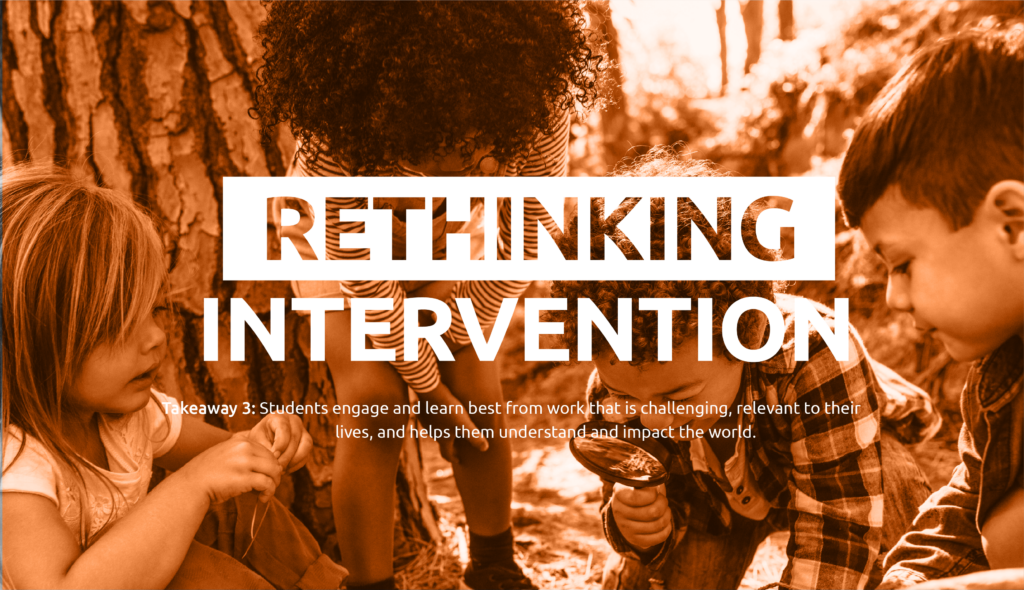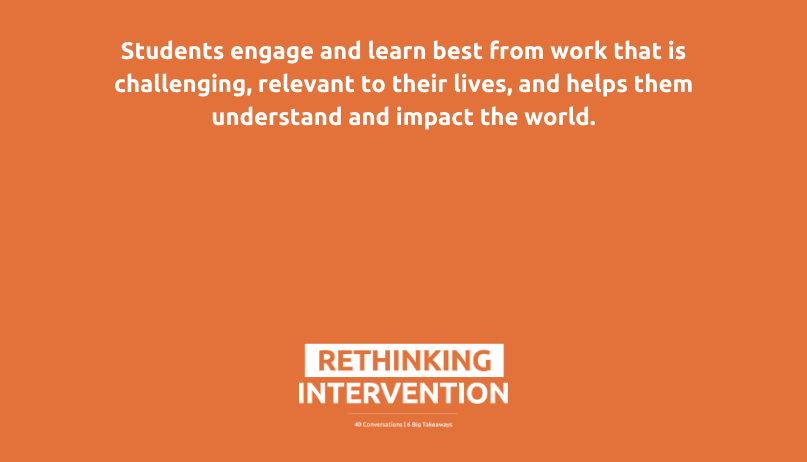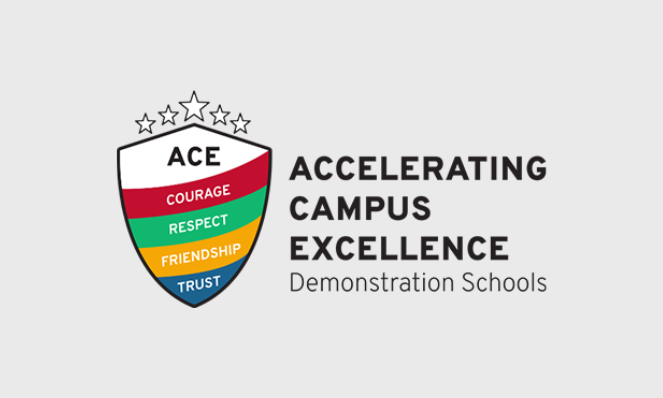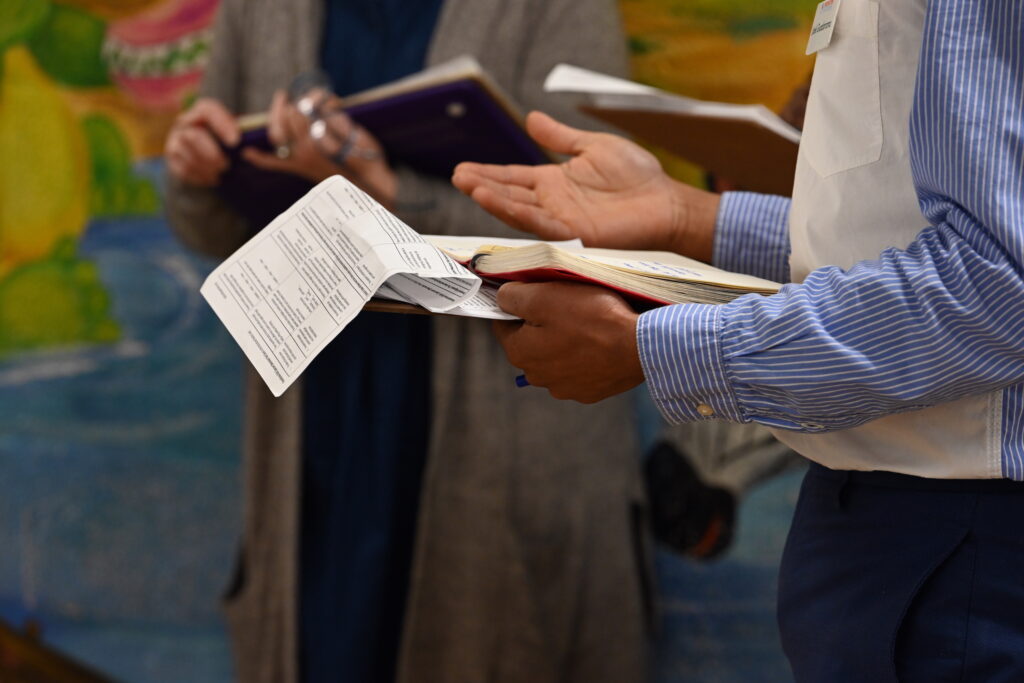
Challenging Content
Students engage and learn best from work that is challenging, relevant to their lives, and helps them understand and impact the world
By Emily Freitag
This post is adapted from an email originally shared on February 19, 2021. If you would like to receive future emails from Emily Freitag, you can sign up here.

Access the Takeaway 3 PLC reflection and discussion guide.
My four-year-old has two career ambitions (this week): To work in a dinosaur museum and to build a machine that stops glaciers from melting. I have been thinking about what kind of K–12 education would prepare him to pursue paths to these jobs in 2034, the year he will graduate from high school.
I find it so hard to imagine what the world will be like in 2034 that I am tempted by simple answers like “the core fundamentals will still be important,” because he will need to read, write, and reason. Or, “he will need to know how to keep learning,” because building curiosity, research skills, and the courage to try new things matters more than any set of content. But to be ready to contribute, I know he will also need a solid foundation for the range of knowledge, technologies, processes, and leading issues he will be navigating. What content will prepare him for that purpose?
As I engaged in conversations with our Rethinking Intervention contributors, I was struck by how much consensus there is that content matters, but also by how many different factors need to shape both the content we teach and the way we teach it. We can know that challenge matters, that helping students be critical consumers of content matters, that knowledge matters, and that relevance to students’ lives and the world matters. Making decisions about how to honor that in curriculum and instruction can feel like it pulls in different directions and runs counter to some of what we learned in teacher preparation.
To name a few of the questions I hear educators wrestle with as they navigate content choices:
- Should I be building knowledge about a common set of facts or making sure content honors the unique identity and culture of individual students? (And how does this relate to what I learned in teacher prep about Bloom’s Taxonomy? Shouldn’t I be aiming higher than knowledge?)
- Should I be challenging students with problems that are hard or spending time attending to foundational knowledge and skills to access the question? (And how do I square this with what I learned in teacher prep about the zone of proximal development?)
- Should I be building knowledge or building student agency in their learning to critique that knowledge? (And how should I think about my role generally? Should I be aiming to be a sage on a stage or a guide on the side?)
Preparing children for a complicated world is complicated work. I walked away from these conversations feeling like our job as educators and parents needs to be attending to the range of experiences that will prepare students; we need to center content that does many things at the same time. Content can both build a common knowledge base of a world beyond our own and ensure sure students can all see themselves in the content that is presented to them. We can give children foundational knowledge without removing the challenge. We can both build understanding of how the world works while also helping students learn to critique the information they are getting and change the world.
As we design schooling to prepare my dinosaur- and iceberg-loving little man and his classmates to be ready to be the change, these conversations made me want to ensure that, if nothing else, the content they engage with does three things:
- Challenges them. (The image of a young Bill McCallum crying over a math problem, and his mother’s respect for his request to let him keep crying, gave me a new role model for mom-ing.)
- Builds a broad understanding of the world while also helping students see their role in the world. (Dr. Muhammad’s amazing research on Black literary societies created a new model for how I want to help my son understand Black history, and his own history.)
- Develops their knowledge of the world and their ability to discover and critique it. (The way Tiffany Neill used a cup as a teaching moment gave me a new understanding of how scientific thinking can live in everyday conversations.)
If this year has shown us anything, it is that our children will have some big challenges to navigate as they lead our country forward. The content we focus on in school needs to prepare them for a complicated future. These conversations taught me that we need to embrace the multiple factors at play if we want to do that job well.
As leaders think about how to use time, energy, and money wisely, here are some actions this takeaway points toward:
- Create a vision of effective instruction that includes challenge, relevance, and knowledge-building. Give feedback to teachers on whether instruction meets that vision.
- Make sure teachers have a solid set of materials they can use as the starting point and a lot of support as they learn to use those materials well.
- Make sure materials provide both windows and mirrors, building understanding of a broader world and making sure students see themselves in what they are learning.
- Attend to the role that knowledge plays, particularly in reading. Be suspicious of skills-only literacy instruction, and think about the role of knowledge in core instruction and in intervention.
- Examine course offerings for challenge and for relevance to career pathways. Find ways to give students access to courses virtually that cannot be able to offer locally.
Here are a few resources relevant to this takeaway:
- The Curriculum Support Guide offers a straightforward example of what systems can do to improve instruction and achievement by selecting, launching, and supporting high-quality curriculum.
- Our team compiled a list of some of our favorite content-specific resources that we’ve used with partners this year.
- Dr. Gholdy Muhammad spoke to EdWeek about her book, Cultivating Genius: An Equity Framework for Culturally and Historically Responsive Literacy.
- This report from Ed Trust analyzed whether classroom assignments reflected today’s college- and career-ready standards.
What else would you add? I’d love to hear your thoughts by email or through our social channels using #RethinkingIntervention.


